

News | November 9, 2015
35th anniversary of the voyager 1 saturn flyby.
By Betsy Reimer
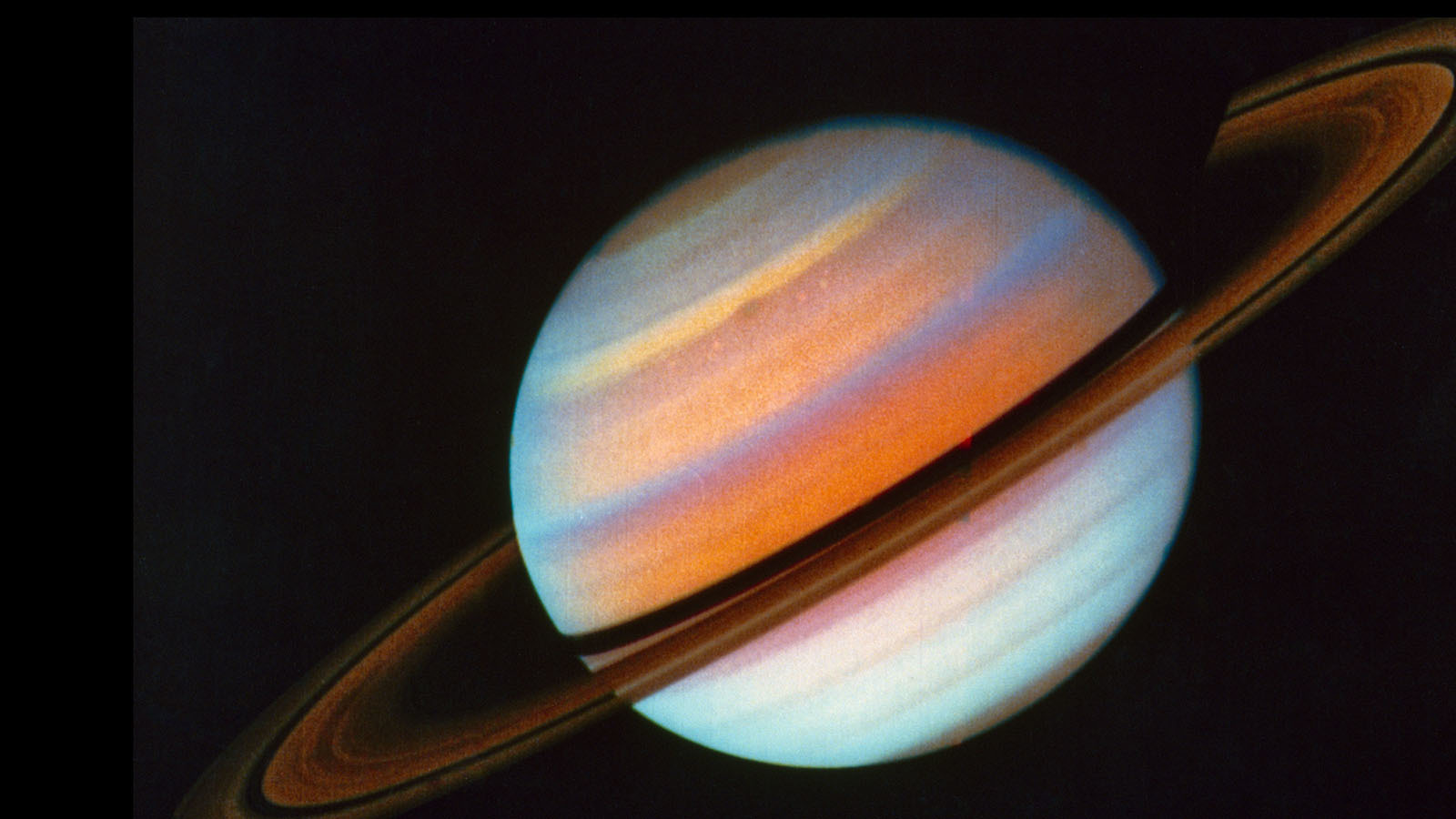
Voyager 1 color-enhanced image of Saturn taken on October 18, 1980, 25 days before closest approach. Credits: NASA/JPL-Caltech
On November 12, 1980, 35 years ago, Voyager 1 became the second spacecraft to flyby Saturn. Its main objectives were to conduct close-up studies of Jupiter and Saturn, Saturn’s rings, and the larger moons of the two planets. Built to last 5 years, the spacecraft is in interstellar space today and still operating 38 years after launch.
Voyager 1 launched on September 5, 1977, on a short and fast trajectory toward Jupiter and Saturn aboard the Titan-Centaur III expendable rocket. At the time, our solar system’s outer planets were in a rare geometric arrangement, which only occurs about every 175 years. The advantage of this alignment, is that it allows a spacecraft to swing from one planet to the next without the need for large onboard propulsion systems, also known as the gravity assist technique. Voyager 1 passed Jupiter on March 5, 1979, and Saturn on November 12, 1980. It’s current velocity is about 38,000 miles per hour.
On its flyby of Saturn, Voyager 1 found an abundance of new data regarding the planet and its moons. Specifically, it found three new moons, Prometheus, Pandora, and Atlas. Prometheus and Pandora are shepherding moons of the F-rings, and Atlas is a shepherd of the A-rings. Finding these moons confirmed that Saturn’s moons are mostly composed of water ice.
Most significantly, the spacecraft found new information regarding Saturn’s largest moon, Titan. It found that Titan has a thick atmosphere, which hides its surface from visible-light cameras and telescopes trying to obtain images. In addition, it found that Titan’s atmosphere was mostly composed of nitrogen like the Earth; however, its surface pressure is 1.6 times as high as Earth’s. Similarly, it found Saturn’s upper atmosphere to be composed of 7% helium and the rest mostly made up of hydrogen. Scientists inferred that because of Saturn’s atmospheric composition, Saturn radiates more heat than what it receives from the sun. Voyager 1 also discovered the G-rings of Saturn.
Thirty two years after the encounter with Saturn, in August 2012, Voyager 1 entered interstellar space and became the most distant human-made object in space. Redesignated the Voyager Interstellar Mission (VIM) at this time, the mission was extended to explore the solar system beyond our outer planets. The goals of the new mission were to collect data on the heliopause boundary, the outer limits of the sun’s magnetic field, and the outward flow of solar wind.
Like sister ship Voyager 2, Voyager 1 carries a Golden Record. The 12-inch gold-plated copper disc contains greetings in 60 languages, samples of music from different cultures and eras, and natural and human-made sounds from Earth to communicate the story of Earth in deep space. The disc also contains electronic information that an advanced technological civilization could convert into diagrams and photographs.
Voyager 2 flew by Saturn in August 1981 and the next mission to Saturn was an orbiter that arrived in 2004. The Cassini probe was designed to explore Saturn’s atmosphere, rings, magnetosphere, and moons. It has successfully found geysers on Saturn’s moon Enceladus, evidence that its moon Titan is Earth-like, and Saturn’s rings are active and dynamic. In 2016, Cassini will embark on The Grand Finale where it will fly between Saturn and its rings 22 times, the closest it has ever been to the planet. This more hazardous research will help us learn about Saturn’s gravity and magnetic fields, its rotation, and the composition of its rings. At the end of The Grand Finale, Cassini will plunge into the atmosphere of Saturn and be destroyed. This step will make sure that the Cassini probe does not accidentally crash on one of the moons of Saturn and (perhaps) contaminate it with microbes from Earth.
- Become A Member
- Gift Membership
- Kids Membership
- Other Ways to Give
- Explore Worlds
- Defend Earth
How We Work
- Education & Public Outreach
- Space Policy & Advocacy
- Science & Technology
- Global Collaboration
Our Results
Learn how our members and community are changing the worlds.
Our citizen-funded spacecraft successfully demonstrated solar sailing for CubeSats.
Space Topics
- Planets & Other Worlds
- Space Missions
- Space Policy
- Planetary Radio
- Space Images
The Planetary Report
The exoplanet issue.
The expanding frontier of discovery.
Get Involved
Membership programs for explorers of all ages.
Get updates and weekly tools to learn, share, and advocate for space exploration.
Volunteer as a space advocate.
Support Our Mission
- Renew Membership
- Society Projects
The Planetary Fund
Accelerate progress in our three core enterprises — Explore Worlds, Find Life, and Defend Earth. You can support the entire fund, or designate a core enterprise of your choice.
- Strategic Framework
- News & Press
The Planetary Society
Know the cosmos and our place within it.
Our Mission
Empowering the world's citizens to advance space science and exploration.
- Explore Space
- Take Action
- Member Community
- Account Center
- “Exploration is in our nature.” - Carl Sagan
Bruce Murray Space Image Library
Voyager 1's departure shot of Saturn
Unlike its twin Voyager 2's departing view, Voyager 1 looked down onto the lit side of the rings; but since Saturn had just passed through its equinox, the Sun was not far above the ring plane, and the rings appeared dark. This is a newly reprocessed version created by Gordan Ugarkovic using green, blue, and violet filter images processed to resemble natural color.
For full functionality of this site it is necessary to enable JavaScript. Here are instructions on how to enable JavaScript in your web browser .

Suggested Searches
- Climate Change
- Expedition 64
- Mars perseverance
- SpaceX Crew-2
- International Space Station
- View All Topics A-Z
Humans in Space
Earth & climate, the solar system, the universe, aeronautics, learning resources, news & events.

NASA, Global Astronomers Await Rare Nova Explosion

NASA Scientists Take to the Seas to Study Air Quality

NASA to Change How It Points Hubble Space Telescope
- Search All NASA Missions
- A to Z List of Missions
- Upcoming Launches and Landings
- Spaceships and Rockets
- Communicating with Missions
- James Webb Space Telescope
- Hubble Space Telescope
- Why Go to Space
- Commercial Space
- Destinations
- Living in Space
- Explore Earth Science
- Earth, Our Planet
- Earth Science in Action
- Earth Multimedia
- Earth Science Researchers
- Pluto & Dwarf Planets
- Asteroids, Comets & Meteors
- The Kuiper Belt
- The Oort Cloud
- Skywatching
- The Search for Life in the Universe
- Black Holes
- The Big Bang
- Dark Energy & Dark Matter
- Earth Science
- Planetary Science
- Astrophysics & Space Science
- The Sun & Heliophysics
- Biological & Physical Sciences
- Lunar Science
- Citizen Science
- Astromaterials
- Aeronautics Research
- Human Space Travel Research
- Science in the Air
- NASA Aircraft
- Flight Innovation
- Supersonic Flight
- Air Traffic Solutions
- Green Aviation Tech
- Drones & You
- Technology Transfer & Spinoffs
- Space Travel Technology
- Technology Living in Space
- Manufacturing and Materials
- Science Instruments
- For Kids and Students
- For Educators
- For Colleges and Universities
- For Professionals
- Science for Everyone
- Requests for Exhibits, Artifacts, or Speakers
- STEM Engagement at NASA
- NASA's Impacts
- Centers and Facilities
- Directorates
- Organizations
- People of NASA
- Internships
- Our History
- Doing Business with NASA
- Get Involved
- Aeronáutica
- Ciencias Terrestres
- Sistema Solar
- All NASA News
- Video Series on NASA+
- Newsletters
- Social Media
- Media Resources
- Upcoming Launches & Landings
- Virtual Events
- Sounds and Ringtones
- Interactives
- STEM Multimedia
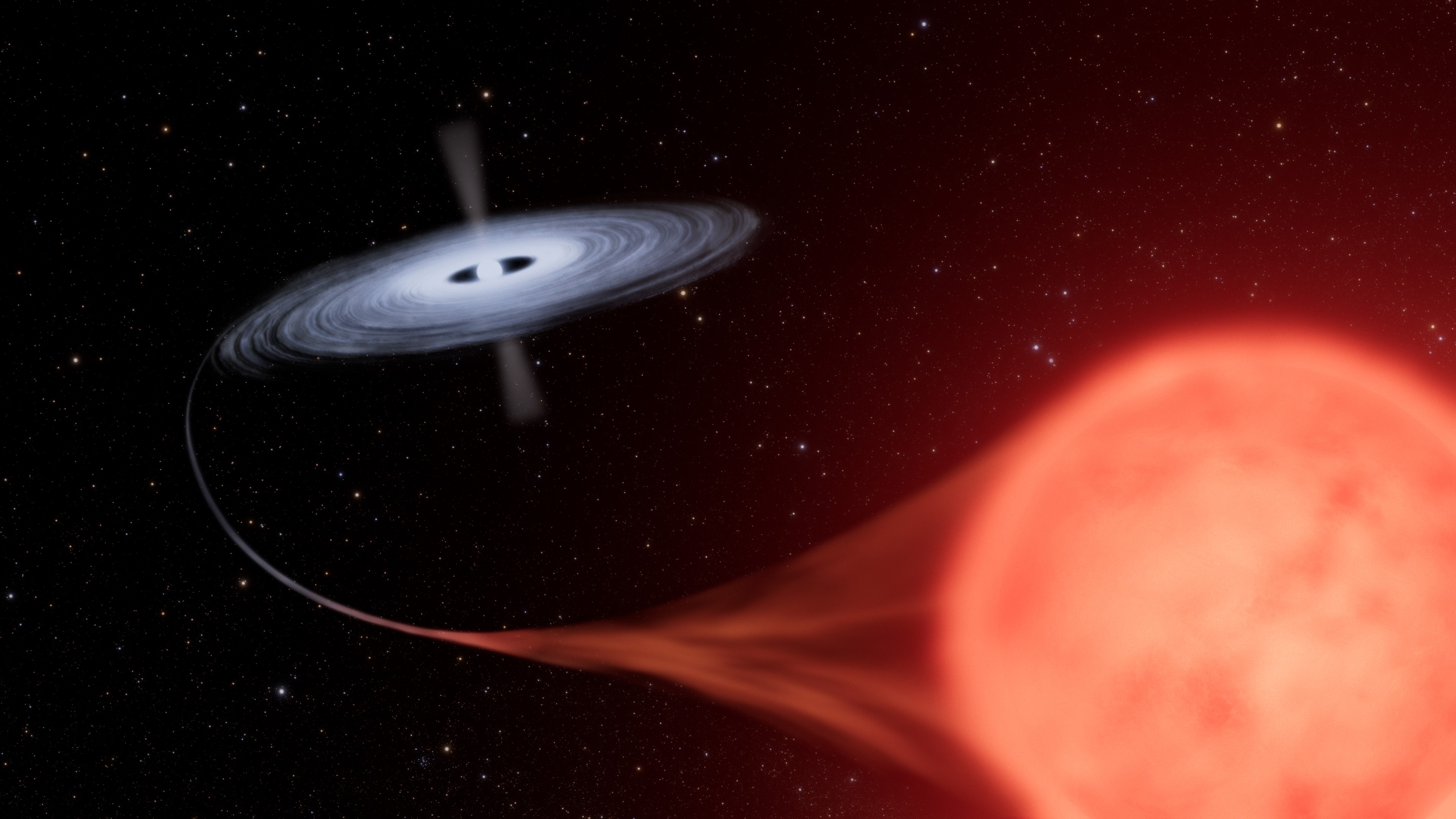
Hubble Finds Surprises Around a Star That Erupted 40 Years Ago

NASA’s Webb Opens New Window on Supernova Science
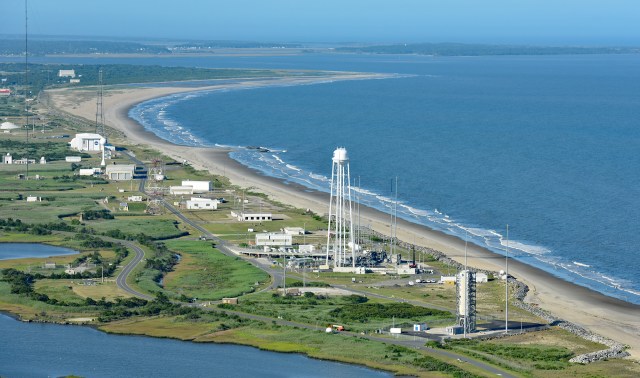
NASA Wallops to Support Sounding Rocket Launch

NASA Astronauts Practice Next Giant Leap for Artemis

Former Astronaut David R. Scott

Space Station Research Advances NASA’s Plans to Explore the Moon, Mars
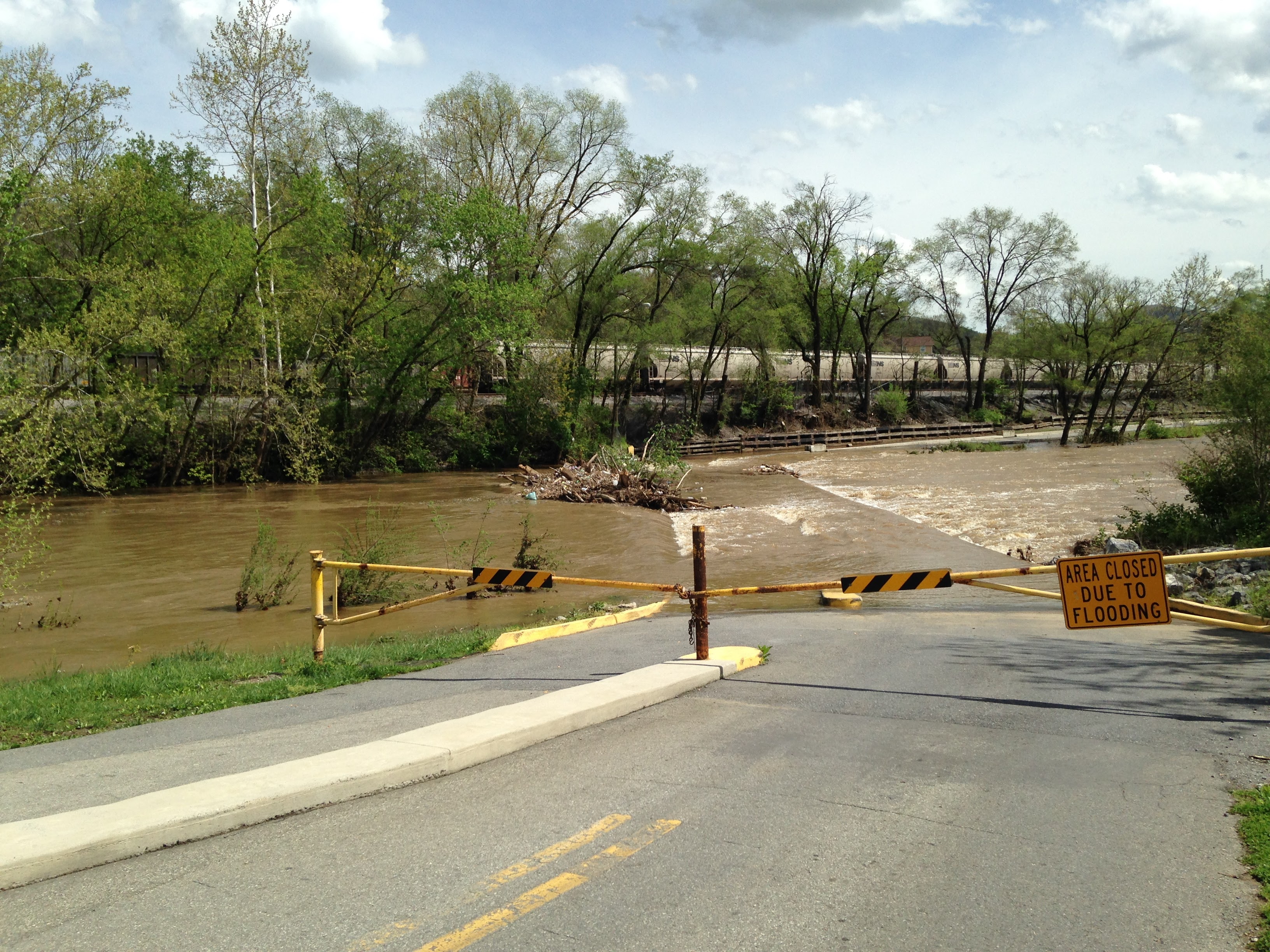
North Carolina Volunteers Work Toward Cleaner Well Water

PACE Celebrates National Ocean Month With Colorful Views of the Planet
Nasa watches mars light up during epic solar storm.

Webb Finds Plethora of Carbon Molecules Around Young Star

Solid State Quantum Magnetometers—Seeking out water worlds from the quantum world

The Big Event, 2025

ARMD Solicitations

Winners Announced in Gateways to Blue Skies Aeronautics Competition

NASA, Industry to Start Designing More Sustainable Jet Engine Core

Food Safety Program for Space Has Taken Over on Earth
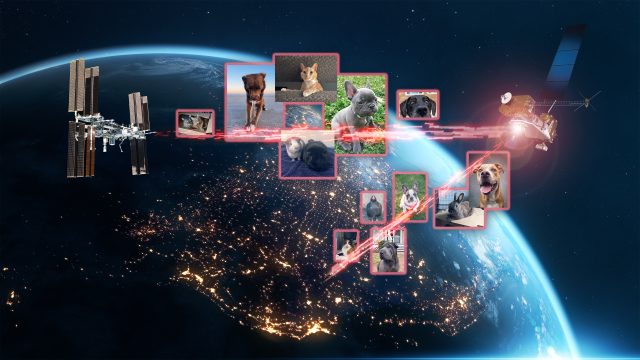
NASA’s Laser Relay System Sends Pet Imagery to, from Space Station

B.10 Heliophysics Flight Opportunities Studies Correction

Artemis Generation Shines During NASA’s 2024 Lunabotics Challenge

NASA Marshall Engineer Receives AIAA Honors Award

Meet the Simunauts: Ohio State Students to Test Space Food Solutions for NASA

Diez maneras en que los estudiantes pueden prepararse para ser astronautas

Astronauta de la NASA Marcos Berríos

Resultados científicos revolucionarios en la estación espacial de 2023
Voyager 1 image of saturn.

Voyager 1 looked back at Saturn on Nov. 16, 1980, four days after the spacecraft flew past the planet, to observe the appearance of Saturn and its rings from this unique perspective. A few of the spokelike ring features discovered by Voyager appear in the rings as bright patches in this image, taken at a distance of 5.3 million kilometers (3.3 million miles) from the planet. Saturn’s shadow falls upon the rings, and the bright Saturn crescent is seen through all but the densest portion of the rings. From Saturn, Voyager 1 is on a trajectory taking the spacecraft out of the ecliptic plane, away from the Sun and eventually out of the solar system (by about 1990). Although its mission to Jupiter and Saturn is nearly over (the Saturn encounter ends Dec. 18, 1980), Voyager 1 will be tracked by the Deep Space Network as far as possible in an effort to determine where the influence of the Sun ends and interstellar space begins. Voyager 1’s flight path through interstellar space is in the direction of the constellation Ophiuchus. Voyager 2 will reach Saturn on August 25, 1981, and is targeted to encounter Uranus in 1986 and possibly Neptune in 1989. The Voyager project is managed for NASA by the Jet Propulsion Laboratory, Pasadena, California.
Image Credt: NASA/JPL
- Scientific Visualization Studio Galleries Help
Voyager 1 Trajectory through the Solar System
Visualization centered on the Voyager 1 trajectory through the solar system.
A slightly sped-up version of the Voyager 1 visualization above, reducing the time for the Voyagers to cross the asteroid belt.
Project support
Release date, datasets used in this visualization.
Planetary ephemerides SPICE kernel
Hubble’s Brand New Image of Jupiter
Where is the edge of the solar system, voyager 2 trajectory through the solar system, revisiting the pale blue dot at 30, you may also like..., no results., an error occurred. please reload this page and try again..
NASA’s Voyager 1 Resumes Sending Engineering Updates to Earth

NASA’s Voyager 1 spacecraft is depicted in this artist’s concept traveling through interstellar space, or the space between stars, which it entered in 2012.
After some inventive sleuthing, the mission team can — for the first time in five months — check the health and status of the most distant human-made object in existence.
For the first time since November , NASA’s Voyager 1 spacecraft is returning usable data about the health and status of its onboard engineering systems. The next step is to enable the spacecraft to begin returning science data again. The probe and its twin, Voyager 2, are the only spacecraft to ever fly in interstellar space (the space between stars).
Voyager 1 stopped sending readable science and engineering data back to Earth on Nov. 14, 2023, even though mission controllers could tell the spacecraft was still receiving their commands and otherwise operating normally. In March, the Voyager engineering team at NASA’s Jet Propulsion Laboratory in Southern California confirmed that the issue was tied to one of the spacecraft’s three onboard computers, called the flight data subsystem (FDS). The FDS is responsible for packaging the science and engineering data before it’s sent to Earth.

After receiving data about the health and status of Voyager 1 for the first time in five months, members of the Voyager flight team celebrate in a conference room at NASA’s Jet Propulsion Laboratory on April 20.
The team discovered that a single chip responsible for storing a portion of the FDS memory — including some of the FDS computer’s software code — isn’t working. The loss of that code rendered the science and engineering data unusable. Unable to repair the chip, the team decided to place the affected code elsewhere in the FDS memory. But no single location is large enough to hold the section of code in its entirety.
So they devised a plan to divide the affected code into sections and store those sections in different places in the FDS. To make this plan work, they also needed to adjust those code sections to ensure, for example, that they all still function as a whole. Any references to the location of that code in other parts of the FDS memory needed to be updated as well.
The team started by singling out the code responsible for packaging the spacecraft’s engineering data. They sent it to its new location in the FDS memory on April 18. A radio signal takes about 22 ½ hours to reach Voyager 1, which is over 15 billion miles (24 billion kilometers) from Earth, and another 22 ½ hours for a signal to come back to Earth. When the mission flight team heard back from the spacecraft on April 20, they saw that the modification worked: For the first time in five months, they have been able to check the health and status of the spacecraft.
Get the Latest News from the Final Frontier
During the coming weeks, the team will relocate and adjust the other affected portions of the FDS software. These include the portions that will start returning science data.
Voyager 2 continues to operate normally. Launched over 46 years ago , the twin Voyager spacecraft are the longest-running and most distant spacecraft in history. Before the start of their interstellar exploration, both probes flew by Saturn and Jupiter, and Voyager 2 flew by Uranus and Neptune.
Caltech in Pasadena, California, manages JPL for NASA.
News Media Contact
Calla Cofield
Jet Propulsion Laboratory, Pasadena, Calif.
626-808-2469
Scientists' predictions for the long-term future of the Voyager Golden Records will blow your mind
Buckle up, everyone, and let's take a ride on a universe-size time machine.

The future is a slippery thing, but sometimes physics can help. And while human destiny will remain ever unknown, the fate of two of our artifacts can be calculated in staggering detail.
Those artifacts are the engraved "Golden Records" strapped to NASA's twin Voyager spacecraft , which have passed into interstellar space. Although the spacecraft will likely fall silent in a few years, the records will remain. Nick Oberg, a doctoral candidate at the Kapteyn Astronomical Institute in the Netherlands, and a colleague wanted to calculate which (if any) stars the two Voyager spacecraft may encounter in the long future of our galaxy.
But the models let them forecast much, much farther into the future. Oberg presented their work at the 237th meeting of the American Astronomical Society , held virtually due to the coronavirus pandemic, on Jan. 12, where he spun a tale of the long future of the twin Voyagers and their Golden Records.
Related: Pale Blue Dot at 30: Voyager 1's iconic photo of Earth from space reveals our place in the universe
NASA launched Voyager 1 and Voyager 2 in 1977 to trek across the solar system. On each was a 12-inch (30 centimeters) large gold-plated copper disk. The brainchild of famed astronomer Carl Sagan, the Golden Records were engraved with music and photographs meant to represent Earth and its humans to any intelligent beings the spacecraft meet on their long journeys. Both spacecraft visited Jupiter and Saturn, then the twins parted ways: Voyager 1 studied Saturn's moon Titan while Voyager 2 swung past Uranus and Neptune.
In 2012, Voyager 1 passed through the heliopause that marks the edge of the sun's solar wind and entered interstellar space; in 2018, Voyager 2 did so as well. Now, the two spacecraft are chugging through the vast outer reaches of the solar system. They continue to send signals back to Earth, updating humans about their adventures far beyond the planets, although those bulletins may cease in a few years, as the spacecraft are both running low on power .
But their journeys are far from over.
Get the Space.com Newsletter
Breaking space news, the latest updates on rocket launches, skywatching events and more!
Oberg and his colleague combined tracking the Voyagers' trajectories forward with studying the environments the spacecraft will fly through to estimate the odds of the Golden Records surviving their adventures while remaining legible. The result is a forecast that stretches beyond not just humanity's likely extinction, but also beyond the collision of the Milky Way with the neighboring Andromeda galaxy — beyond even the extinction of most stars.
Related: The Golden Record in pictures: Voyager probes' message to space explained
Milky Way sightseein
Unsurprisingly, the duo's research ambitions didn't start out quite so vast. The new research was inspired by the release of the second batch of data from the European Space Agency's spacecraft Gaia , which specializes in mapping more than a billion stars super precisely.
"Our original goal was to determine with a very high precision which stars the Voyagers might one day closely encounter using the at the time newly released Gaia catalog of stars," Oberg said during his presentation. So he and his co-author began by tracing the Voyagers' journeys to date and projecting their trajectories out into the future.
But don't get excited for any upcoming milestones. Not until about 20,000 years from now will the Voyagers pass through the Oort cloud — the shell of comets and icy rubble that orbits the sun at a distance of up to 100,000 astronomical units, or 100,000 times the average Earth-sun distance — finally waving goodbye to its solar system of origin.
"At that point for the first time the craft will begin to feel the gravitational pull of other stars more strongly than that of our own sun," Oberg said.
It's another 10,000 years before the spacecraft actually come near an alien star, specifically a red dwarf star called Ross 248. That flyby will occur about 30,000 years from now, Oberg said, although it might be a stretch to say that the spacecraft will pass by that star. "It's actually more like Ross 248 shooting past the nearly stationary Voyagers," he said.
By 500 million years from now, the solar system and the Voyagers alike will complete a full orbit through the Milky Way. There's no way to predict what will have happened on Earth's surface by then, but it's a timespan on the scale of the formation and destruction of Pangaea and other supercontinents, Oberg said.
Throughout this galactic orbit, the Voyager spacecraft will oscillate up and down, with Voyager 1 doing so more dramatically than its twin. According to these models, Voyager 1 will travel so far above the main disk of the galaxy that it will see stars at just half the density as we do.
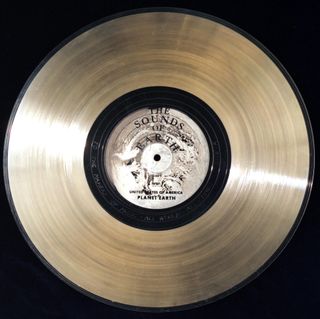
Odds of destruction
The same difference in vertical motion will also shape the differing odds each spacecraft's Golden Record has of survival.
The records were designed to last, meant to survive perhaps a billion years in space : beneath the golden sheen is a protective aluminum casing and, below that, the engraved copper disks themselves. But to truly understand how long these objects may survive, you have to know what conditions they'll experience, and that means knowing where they will be.
Specifically, Oberg and his colleague needed to know how much time the spacecraft would spend swathed in the Milky Way's vast clouds of interstellar dust , which he called "one of the few phenomena that could actually act to damage the spacecraft."
It's a grim scenario, dust pounding into the Voyagers at a speed of a few miles or kilometers per second. "The grains will act as a steady rain that slowly chips away at the skin of the spacecraft," Oberg said. "A dust grain only one-thousandth of a millimeter across will still leave a small vaporized crater when it impacts."
Voyager 1's vertical oscillations mean that spacecraft will spend more time above and below the plane of the galaxy, where the clouds are thickest. Oberg and his colleague simulated thousands of times over the paths of the two spacecraft and their encounters with the dust clouds, modeling the damage the Golden Records would incur along the way.

That work also requires taking into consideration the possibility that a cloud's gravity might tug at one of the Voyagers' trajectories, Oberg said. "The clouds have so much mass concentrated in one place that they actually may act to bend the trajectory of the spacecraft and fling them into new orbits — sometimes much farther out, sometimes even deeper toward the galactic core."
Both Golden Records have good odds of remaining legible, since their engraved sides are tucked away against the spacecraft bodies. The outer surface of Voyager 1's record is more likely to erode away, but the information on Voyager 2's record is more likely to become illegible, Oberg said.
"The main reason for this is because the orbit that Voyager 2 is flung into is more chaotic, and it's significantly more difficult to predict with any certainty of exactly what sort of environment it's going to be flying through," he said.
But despite the onslaught and potential detours, "Both Golden Records are highly likely to survive at least partially intact for a span of over 5 billion years," Oberg said.
Related: Photos from NASA's Voyager 1 and 2 probes
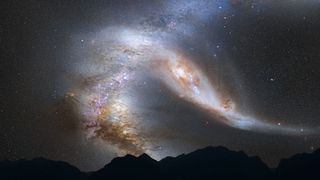
After the Milky Way's end
After those 5 billion years, modeling is tricky. That's when the Milky Way is due to collide with its massive neighbor, the Andromeda galaxy , and things get messy. "The orderly spiral shape will be severely warped, and possibly destroyed entirely," Oberg said. The Voyagers will be caught up in the merger, with the details difficult to predict so far in advance.
Meanwhile, the vicarious sightseeing continues. Oberg and his colleague calculated that in this 5-billion-year model-friendly period, each of the Voyagers likely visits a star besides our sun within about 150 times the distance between Earth and the sun, or three times the distance between the sun and Pluto at the dwarf planet's most distant point.
Precisely which star that might be, however, is tricky — it may not even be a star we know today.
"While neither Voyager is likely to get particularly close to any star before the galaxies collide, the craft are likely to at least pass through the outskirts of some [star] system," Oberg said. "The very strange part is that that actually might be a system that does not yet exist, of a star that has yet to be born."
Such are the perils of working on a scale of billions of years.
From here, the Voyagers' fate depends on the conditions of the galactic merger , Oberg said.
The collision itself might kick a spacecraft out of the newly monstrous galaxy — a one in five chance, he said — although it would remain stuck in the neighborhood. If that occurs, the biggest threat to the Golden Records would become collisions with high-energy cosmic rays and the odd molecule of hot gas, Oberg said; these impacts would be rarer than the dust that characterized their damage inside the Milky Way.
Inside the combined galaxy, the Voyagers' fate would depend on how much dust is left behind by the merger; Oberg said that may well be minimal as star formation and explosion both slow, reducing the amount of dust flung into the galaxy.
Depending on their luck with this dust, the Voyagers may be able to ride out trillions of trillions of trillions of years, long enough to cruise through a truly alien cosmos, Oberg said.
"Such a distant time is far beyond the point where stars have exhausted their fuel and star formation has ceased in its entirety in the universe," he said. "The Voyagers will be drifting through what would be, to us, a completely unrecognizable galaxy, free of so-called main-sequence stars , populated almost exclusively by black holes and stellar remnants such as a white dwarfs and neutron stars."
It's a dark future, Oberg added. "The only source of significant illumination in this epoch will be supernovas that results from the once-in-a-trillion-year collision between these stellar remnants that still populate the galaxy," he said. "Our work, found on these records, thus may bear witness to these isolated flashes in the dark."
Email Meghan Bartels at [email protected] or follow her on Twitter @meghanbartels. Follow us on Twitter @Spacedotcom and on Facebook.
China has made it to Mars .
The nation's first fully homegrown Mars mission, Tianwen-1 , arrived in orbit around the Red Planet today (Feb. 10), according to Chinese media reports.
The milestone makes China the sixth entity to get a probe to Mars, joining the United States, the Soviet Union, the European Space Agency, India and the United Arab Emirates, whose Hope orbiter made it to the Red Planet just yesterday (Feb. 9).
And today's achievement sets the stage for something even more epic a few months from now — the touchdown of Tianwen-1's lander-rover pair on a large plain in Mars' northern hemisphere called Utopia Planitia , which is expected to take place this May. (China doesn't typically publicize details of its space missions in advance, so we don't know for sure exactly when that landing will occur.)
Related: Here's what China's Tianwen-1 Mars mission will do See more: China's Tianwen-1 Mars mission in photos
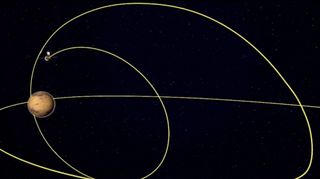
Book of Mars: $22.99 at Magazines Direct
Within 148 pages, explore the mysteries of Mars. With the latest generation of rovers, landers and orbiters heading to the Red Planet, we're discovering even more of this world's secrets than ever before. Find out about its landscape and formation, discover the truth about water on Mars and the search for life, and explore the possibility that the fourth rock from the sun may one day be our next home.

An ambitious mission
China took its first crack at Mars back in November 2011, with an orbiter called Yinghuo-1 that launched with Russia's Phobos-Grunt sample-return mission . But Phobos-Grunt never made it out of Earth orbit, and Yinghuo-1 crashed and burned with the Russian probe and another tagalong, the Planetary Society's Living Interplanetary Flight Experiment.
Tianwen-1 ( which means "Questioning the Heavens" ) is a big step up from Yinghuo-1, however. For starters, this current mission is an entirely China-led affair; it was developed by the China National Space Administration (with some international collaboration) and launched atop a Chinese Long March 5 rocket on July 23, 2020.
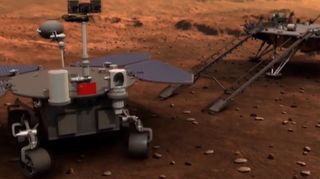
Tianwen-1 is also far more ambitious than the earlier orbiter, which weighed a scant 254 lbs. (115 kilograms). Tianwen-1 tipped the scales at about 11,000 lbs. (5,000 kg) at launch, and it consists of an orbiter and a lander-rover duo.
These craft will take Mars' measure in a variety of ways. The orbiter, for example, will study the planet from above using a high-resolution camera, a spectrometer, a magnetometer and an ice-mapping radar instrument, among other scientific gear.
The orbiter will also relay communications from the rover, which sports an impressive scientific suite of its own. Among the rover's gear are cameras, climate and geology instruments and ground-penetrating radar, which will hunt for pockets of water beneath Mars' red dirt.
Occupy Mars: History of robotic Red Planet missions (infographic)
"On Earth, these pockets can host thriving microbial communities, so detecting them on Mars would be an important step in our search for life on other worlds," the Planetary Society wrote in a description of the Tianwen-1 mission .
The lander, meanwhile, will serve as a platform for the rover, deploying a ramp that the wheeled vehicle will roll down onto the Martian surface. The setup is similar to the one China has used on the moon with its Chang'e 3 and Chang'e 4 rovers, the latter of which is still going strong on Earth's rocky satellite.
If the Tianwen-1 rover and lander touch down safely this May and get to work, China will become just the second nation, after the United States, to operate a spacecraft successfully on the Red Planet's surface for an appreciable amount of time. (The Soviet Union pulled off the first-ever soft touchdown on the Red Planet with its Mars 3 mission in 1971, but that lander died less than two minutes after hitting the red dirt.)
The Tianwen-1 orbiter is scheduled to operate for at least one Mars year (about 687 Earth days), and the rover's targeted lifetime is 90 Mars days, or sols (about 93 Earth days).
Bigger things to come?
Tianwen-1 will be just China's opening act at Mars, if all goes according to plan: The nation aims to haul pristine samples of Martian material back to Earth by 2030, where they can be examined in detail for potential signs of life and clues about Mars' long-ago transition from a relatively warm and wet planet to the cold desert world it is today.
NASA has similar ambitions, and the first stage of its Mars sample-return campaign is already underway. The agency's Perseverance rover will touch down inside the Red Planet's Jezero Crater next Thursday (Feb. 18), kicking off a surface mission whose top-level tasks include searching for signs of ancient Mars life and collecting and caching several dozen samples.
Perseverance's samples will be hauled home by a joint NASA-European Space Agency campaign, perhaps as early as 2031 .
So we have a lot to look forward to in the coming days and weeks, and many reasons to keep our fingers crossed for multiple successful Red Planet touchdowns.
"More countries exploring Mars and our solar system means more discoveries and opportunities for global collaboration," the Planetary Society wrote in its Tianwen-1 description. "Space exploration brings out the best in us all, and when nations work together everyone wins."
Mike Wall is the author of " Out There " (Grand Central Publishing, 2018; illustrated by Karl Tate), a book about the search for alien life. Follow him on Twitter @michaeldwall. Follow us on Twitter @Spacedotcom or Facebook.
Join our Space Forums to keep talking space on the latest missions, night sky and more! And if you have a news tip, correction or comment, let us know at: [email protected].
Meghan is a senior writer at Space.com and has more than five years' experience as a science journalist based in New York City. She joined Space.com in July 2018, with previous writing published in outlets including Newsweek and Audubon. Meghan earned an MA in science journalism from New York University and a BA in classics from Georgetown University, and in her free time she enjoys reading and visiting museums. Follow her on Twitter at @meghanbartels.
At long last: Europe's new Ariane 6 rocket set to debut on July 9
SpaceX lands Falcon 9 rocket for 300th time (video)
Sandworms rise from the sands of Arrakis in exclusive sneak peek at 'Dune: The Graphic Novel, Book 3'
Most Popular
- 2 What is the 3-body problem, and is it really unsolvable?
- 3 Astronauts test SpaceX Starship hardware and spacesuits for Artemis 3 moon mission (photos)
- 4 'Stellar Dreams' project gifting 100 telescopes to 100 families (exclusive)
- 5 At long last: Europe's new Ariane 6 rocket set to debut on July 9

All About Saturn

Credit: NASA/JPL-Caltech
Saturn isn’t the only planet to have rings, but it definitely has the most beautiful ones. The rings we see are made of groups of tiny ringlets that surround Saturn. They’re made of chunks of ice and rock. Like Jupiter, Saturn is mostly a ball of hydrogen and helium.
Explore Saturn! Click and drag to rotate Saturn. Scroll or pinch to zoom in and out. Credit: NASA Visualization Technology Applications and Development (VTAD)
When Galileo Galilei saw Saturn through a telescope in the 1600s, he wasn't sure what he was seeing. At first he thought he was looking at three planets, or a planet with handles. Now we know those "handles" turned out to be the rings of Saturn.

Structure and Surface
- Saturn is a gas giant like Jupiter. It is made mostly of hydrogen and helium.
- Saturn has a thick atmosphere.
- Saturn has a lovely set of seven main rings with spaces between them.
Time on Saturn
- One day on Saturn goes by in just 10.7 hours.
- One year on Saturn is the same as 29 Earth years.
Saturn's Neighbors
- As of June 8, 2023, Saturn has 146 moons.
- Saturn is the sixth planet from the Sun. That means Jupiter and Uranus are Saturn’s neighboring planets.
Quick History
- Saturn has been known since ancient times because it can be seen without advanced telescopes.
- Four robotic spacecraft have visited Saturn, including Pioneer 11, Cassini, and Voyager 1 and 2.
What does Saturn look like?

The Cassini spacecraft took this picture of Saturn's rings. You can see the grey and tan colors.

This is a picture of Saturn and its moons Tethys and Dione. Voyager 1 took this picture as it passed by.

NASA's Cassini spacecraft went behind Saturn and took this picture in 2013. You can see seven of its moons and its inner rings. In the background you can also see Earth.

A portrait looking down on Saturn and its rings. This picture was made from images taken by NASA's Cassini spacecraft in 2013. It was put together by amateur image processor and Cassini fan Gordan Ugarkovic.
For more information visit:
Planet Saturn Overview
Explore the Solar System

If you liked this, you may like:
Deciphering RHEL AI: An Open Source Approach to Artificial Intelligence
Why is voyager 1 sending gibberish after 47 years, data classification and risk assessment: foundations for effective data protection.
Active for almost 50 years since its launch in 1977, Voyager 1 – the first spacecraft to cross into interstellar space – is not doing well. Adarsh explains what’s going on….
NASA launched Voyager 1 from the Kennedy Space Cater in Florida in 1977, along with its sister craft Voyager 2. These two are the longest-serving, nonpassive spacecrafts in existence. They are part of an elite fleet of five probes that are on trajectories that will take them out of the solar system, never to return.
But since November of 2023, Voyager 1 has been sending incomprehensible messages back to Earth and that has got the engineers at NASA really worried. Suzanne Dodd, a part of NASA’s Jet Propulsion Laboratory, said “”It basically stopped talking to us in a coherent manner.”
So, is the Voyager 1’s near-50-year journey about to end?
The History of the Voyagers
Voyagers 1 and 2 were initially on a four-year mission to study Jupiter, Saturn and the larger moons of the two planets over a period of five years. But they have managed to outlast their original mission lifespan by more than 35 years and are both currently 130 times farther away from Earth than our planet is from the Sun.
The twin spacecraft made a string of discoveries on and around Jupiter and Saturn, like the intricacies of Saturn’s rings and the presence of active volcanoes on Jupiter’s moon Io. Voyager 2 went on to explore Uranus and Neptune and is still the only spacecraft to have visited those planets.
Apart from its scientific impact, Voyager 1 also clicked the famous “Pale Blue Dot” image of Earth, which American astronomer Carl Sagan interpreted as a representation of how small humanity is in the grand scale of the cosmos.
What seems to be the Problem
Voyager 1 started facing a critical computer glitch in November last year. Instead of the expected data, Mission Control was receiving gibberish from the craft, indicating a malfunction in its flight data subsystem (FDS).
With Voyager 1’s software and documentation dating back to the 1970s, troubleshooting was proving to be a challenge. Most of the scientists who worked on the old code have retired by now and the documentation itself is aging, adding to the complexity of the situation.
Mission Control suspected corrupted code and began sending commands to bypass the issue. A breakthrough came on March 1, this year, when a command successfully reached Voyager 1, although it took nearly two days for a response due to the immense distance. Upon decoding the response, engineers realized it contained the entire FDS memory, providing a comprehensive record of the craft’s data and operations.
This discovery serves as a cosmic Rosetta Stone, allowing NASA to compare current and past data to pinpoint the malfunction’s cause and hopefully extend Voyager 1’s mission.
The Last Word
Regardless of this issue, Voyager 1 has been showing its age and isn’t anticipated to last more than a few more years as its radio-thermal generators run down.
But if the engineers at NASA don’t manage to overcome the computer glitch completely, that journey could end a lot sooner. Whether they are able to solve it, remains to be seen.
In case you missed:
- Presenting the Matsya 6000 – India’s First Manned Submersible
- Exploring ISRO’s Ambitious Plans for 2024
Are you ready for the Apple Flip Phone? Get Ready for the Foldable iPhone!
- Einstein’s 100-Year-Old Prediction about the Universe Proven!
- How AI is transforming the Way We Work!
- The Pros & Cons of Facial Recognition
- All You Need to Know about Gemini, Google’s Response to ChatGPT
- Introducing Universal AI Employee being built by Ema AI
- Work Video Calls are having an Adverse Effect on our Brains!
Elon Musk says X will now be payable for New Users
Adarsh hates personal bios, Chelsea football club and Oxford commas. When he's not writing, he's busy playing FIFA on his PlayStation.
Leave A Reply Cancel Reply
Save my name, email, and website in this browser for the next time I comment.
Latest Posts
How ai helped us find plato’s burial site, presenting claude, chatgpt’s competitor which is apparently better, 5 free ai assistants to make your life easier, will ai eat up more it jobs in 2024.
- Buy Domains
- Cloud Services
- Digital Services
- Data Center Services
- Networks Services
- Integration Services
- Security Services
- Sify Marketplace
- Privacy Policy
Type above and press Enter to search. Press Esc to cancel.
Things to Do in Elektrostal, Russia - Elektrostal Attractions
Things to do in elektrostal.
- 5.0 of 5 bubbles
- 4.0 of 5 bubbles & up
- Good for a Rainy Day
- Good for Kids
- Good for Big Groups
- Adventurous
- Budget-friendly
- Hidden Gems
- Good for Couples
- Honeymoon spot
- Good for Adrenaline Seekers
- Things to do ranked using Tripadvisor data including reviews, ratings, photos, and popularity.

1. Electrostal History and Art Museum

2. Statue of Lenin

3. Park of Culture and Leisure
4. museum and exhibition center.

5. Museum of Labor Glory

7. Galereya Kino
8. viki cinema, 9. smokygrove.

10. Gandikap
11. papa lounge bar, 12. karaoke bar.

- Bahasa Indonesia
- Eastern Europe
- Moscow Oblast
Elektrostal
Elektrostal Localisation : Country Russia , Oblast Moscow Oblast . Available Information : Geographical coordinates , Population, Altitude, Area, Weather and Hotel . Nearby cities and villages : Noginsk , Pavlovsky Posad and Staraya Kupavna .
Information
Find all the information of Elektrostal or click on the section of your choice in the left menu.
- Update data
Elektrostal Demography
Information on the people and the population of Elektrostal.
Elektrostal Geography
Geographic Information regarding City of Elektrostal .
Elektrostal Distance
Distance (in kilometers) between Elektrostal and the biggest cities of Russia.
Elektrostal Map
Locate simply the city of Elektrostal through the card, map and satellite image of the city.
Elektrostal Nearby cities and villages
Elektrostal weather.
Weather forecast for the next coming days and current time of Elektrostal.
Elektrostal Sunrise and sunset
Find below the times of sunrise and sunset calculated 7 days to Elektrostal.
Elektrostal Hotel
Our team has selected for you a list of hotel in Elektrostal classified by value for money. Book your hotel room at the best price.
Elektrostal Nearby
Below is a list of activities and point of interest in Elektrostal and its surroundings.
Elektrostal Page

- Information /Russian-Federation--Moscow-Oblast--Elektrostal#info
- Demography /Russian-Federation--Moscow-Oblast--Elektrostal#demo
- Geography /Russian-Federation--Moscow-Oblast--Elektrostal#geo
- Distance /Russian-Federation--Moscow-Oblast--Elektrostal#dist1
- Map /Russian-Federation--Moscow-Oblast--Elektrostal#map
- Nearby cities and villages /Russian-Federation--Moscow-Oblast--Elektrostal#dist2
- Weather /Russian-Federation--Moscow-Oblast--Elektrostal#weather
- Sunrise and sunset /Russian-Federation--Moscow-Oblast--Elektrostal#sun
- Hotel /Russian-Federation--Moscow-Oblast--Elektrostal#hotel
- Nearby /Russian-Federation--Moscow-Oblast--Elektrostal#around
- Page /Russian-Federation--Moscow-Oblast--Elektrostal#page
- Terms of Use
- Copyright © 2024 DB-City - All rights reserved
- Change Ad Consent Do not sell my data

Saturn: Exploration
Four robotic spacecraft have visited Saturn. NASA's Pioneer 11 provided the first close look in September 1979. NASA's twin Voyager 1 and Voyager 2 spacecraft followed up with flybys nine months apart in 1980 and 1981.
Each flyby revealed intriguing details about the ringed giant world, but it wasn't until the international Cassini mission arrived in orbit in 2004 that our understanding of Saturn really started to take shape. Cassini studied Saturn from orbit for 13 years before its human engineers on Earth transformed it into an atmospheric probe for its spectacular final plunge into the planet in September 2017. Cassini also carried ESA's Huygens Probe , which landed on Saturn's moon Titan in 2005.
From Earth, astronomers have studied Saturn with telescopes for centuries. And the Hubble Space Telescope continues to uncover new details from its perch in Earth orbit.
Significant Events
- ~700 BCE: The oldest written records documenting Saturn are attributed to the Assyrians . They described the ringed planet as a sparkle in the night and named it "Star of Ninib."
- ~400 BCE: Ancient Greek astronomers name what they think is a wandering star in honor of Kronos, the god of agriculture. The Romans later change the name to Saturn, their god of agriculture.
- July 1610: Galileo Galilei spots Saturn's rings through a telescope, but mistakes them for a "triple planet."
- 1655: Christiaan Huygens discovers Saturn's rings and its largest moon, Titan.
- 1675: Italian-born astronomer Jean-Dominique Cassini discovers a "division" between what are now called the A and B rings.
- Sept. 1, 1979: Pioneer 11 is the first spacecraft to reach Saturn. Among Pioneer 11's many discoveries are Saturn's F ring and a new moon.
- 1980 and 1981: In its 1980 flyby of Saturn, Voyager 1 reveals the intricate structure of the ring system, consisting of thousands of ringlets. Flying even closer to Saturn in 1981, Voyager 2 provides more detailed images and documents the thinness of some of the rings.
- July 1, 2004: NASA's Cassini spacecraft becomes the first to orbit Saturn, beginning a decade-long mission that revealed many secrets and surprises about Saturn and its system of rings and moons.
- Jan. 14, 2005: The European Space Agency's Huygens probe is the first spacecraft to make a soft landing on the surface of another planet's moon — Saturn's giant moon Titan. The probe provides the first direct study of Titan's atmosphere and the first-and-only direct images of Titan's surface, which is shrouded by thick
- Sept. 17, 2006: Scientists discover a new ring. The ring coincides with the orbits of Saturn's moons Janus and Epimetheus. Images taken during a solar occultation that backlit the planet revealed the new ring.
- 2009: NASA’s Spitzer Space Telescope reveals the presence of a gigantic, low density ring associated with Saturn’s distant moon Phoebe.
- Sep. 15, 2017: Cassini ends a 13-year orbital mission with a spectacular, planned plunge into Saturn’s atmosphere – sending science data back to the last second. Cassini’s final five orbits enable scientists to directly sample Saturn’s atmosphere for the first time
Missions to Saturn
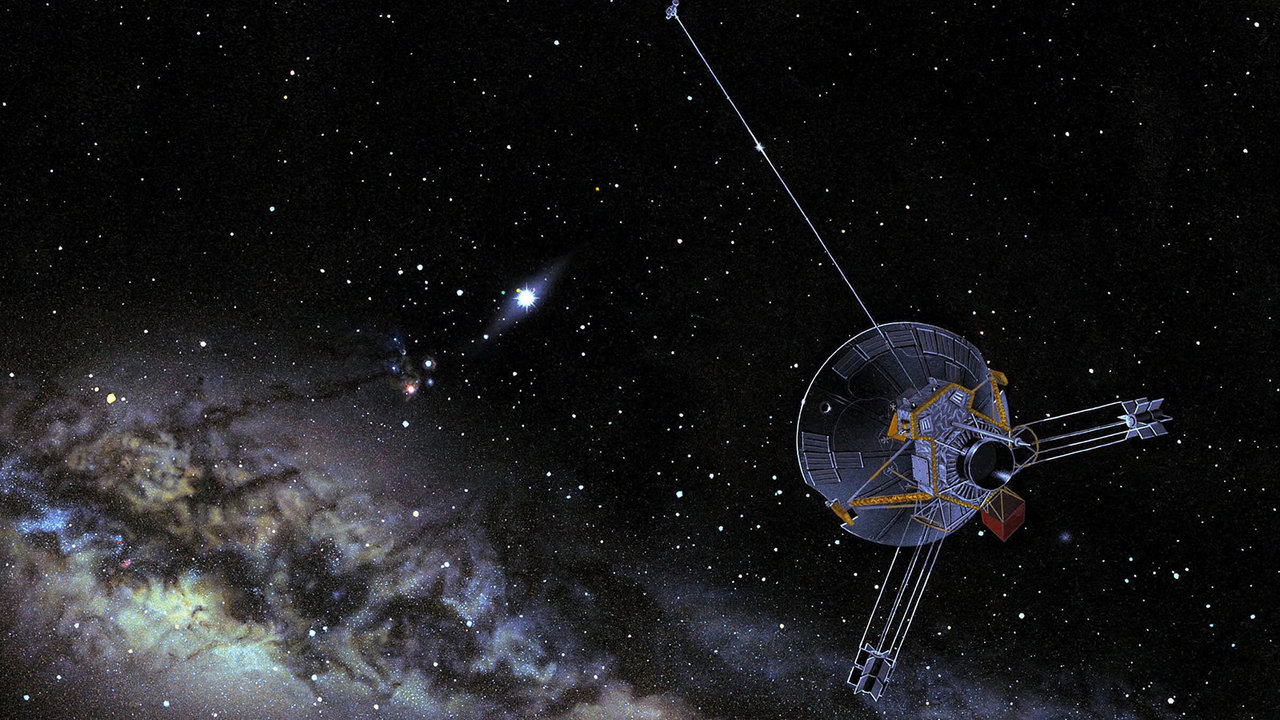
Pioneer 11 was the first spacecraft to study Saturn up close.
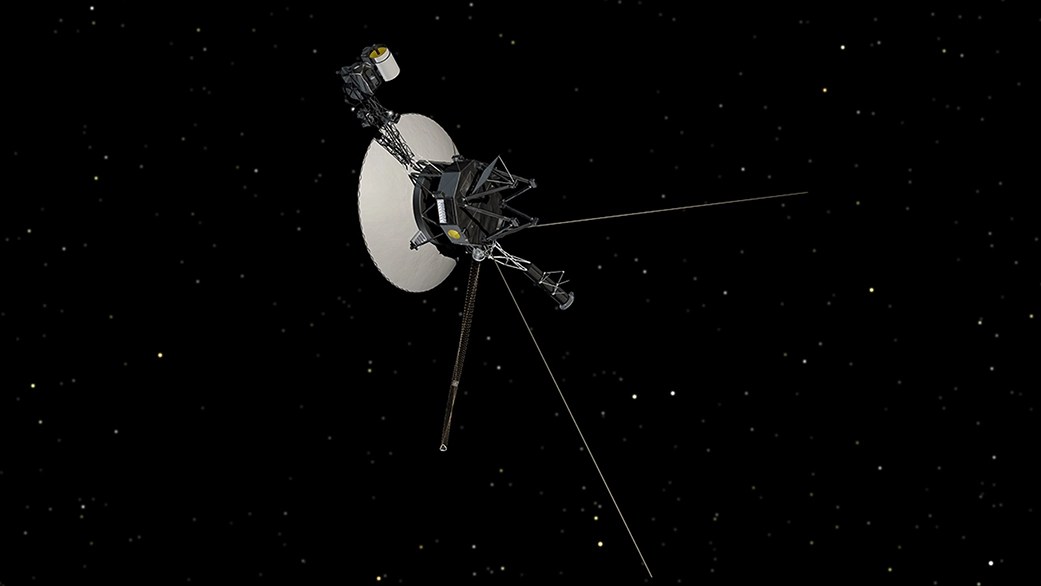
The twin Voyagers launched in 1977 to visit Jupiter and Saturn, and never stopped.
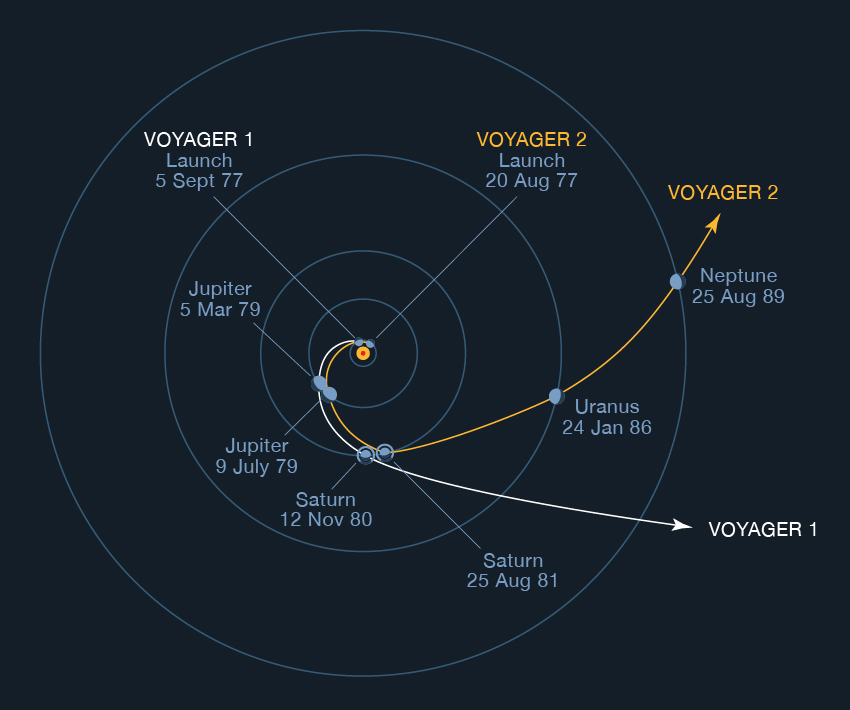
Voyager 2 flew by Saturn and returned spectacular photos and unprecedented data.
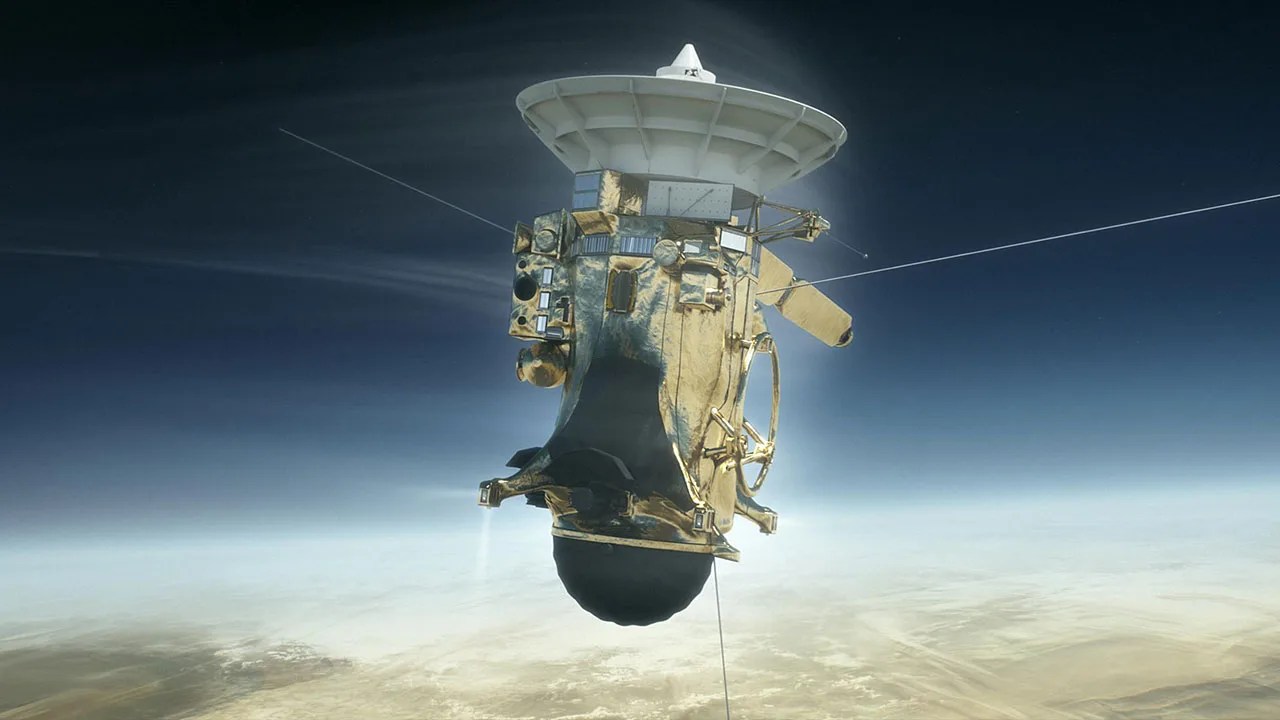
For more than a decade, Cassini shared the wonders of Saturn and its family of icy moons.
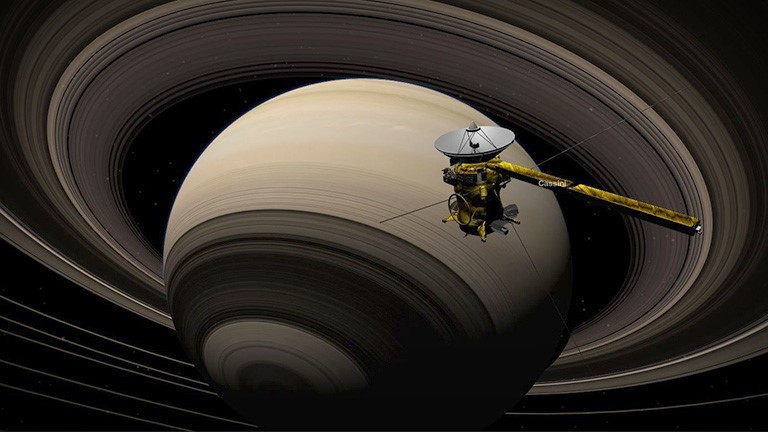
Discover More Topics From NASA

Asteroids, Comets & Meteors

Kuiper Belt

Current time by city
For example, New York
Current time by country
For example, Japan
Time difference
For example, London
For example, Dubai
Coordinates
For example, Hong Kong
For example, Delhi
For example, Sydney
Geographic coordinates of Elektrostal, Moscow Oblast, Russia
City coordinates
Coordinates of Elektrostal in decimal degrees
Coordinates of elektrostal in degrees and decimal minutes, utm coordinates of elektrostal, geographic coordinate systems.
WGS 84 coordinate reference system is the latest revision of the World Geodetic System, which is used in mapping and navigation, including GPS satellite navigation system (the Global Positioning System).
Geographic coordinates (latitude and longitude) define a position on the Earth’s surface. Coordinates are angular units. The canonical form of latitude and longitude representation uses degrees (°), minutes (′), and seconds (″). GPS systems widely use coordinates in degrees and decimal minutes, or in decimal degrees.
Latitude varies from −90° to 90°. The latitude of the Equator is 0°; the latitude of the South Pole is −90°; the latitude of the North Pole is 90°. Positive latitude values correspond to the geographic locations north of the Equator (abbrev. N). Negative latitude values correspond to the geographic locations south of the Equator (abbrev. S).
Longitude is counted from the prime meridian ( IERS Reference Meridian for WGS 84) and varies from −180° to 180°. Positive longitude values correspond to the geographic locations east of the prime meridian (abbrev. E). Negative longitude values correspond to the geographic locations west of the prime meridian (abbrev. W).
UTM or Universal Transverse Mercator coordinate system divides the Earth’s surface into 60 longitudinal zones. The coordinates of a location within each zone are defined as a planar coordinate pair related to the intersection of the equator and the zone’s central meridian, and measured in meters.
Elevation above sea level is a measure of a geographic location’s height. We are using the global digital elevation model GTOPO30 .
Elektrostal , Moscow Oblast, Russia

- The Contents
- The Making of
- Where Are They Now
- Frequently Asked Questions
- Q & A with Ed Stone
golden record
Where are they now.
- frequently asked questions
- Q&A with Ed Stone
News | April 27, 2023
Nasa's voyager will do more science with new power strategy.
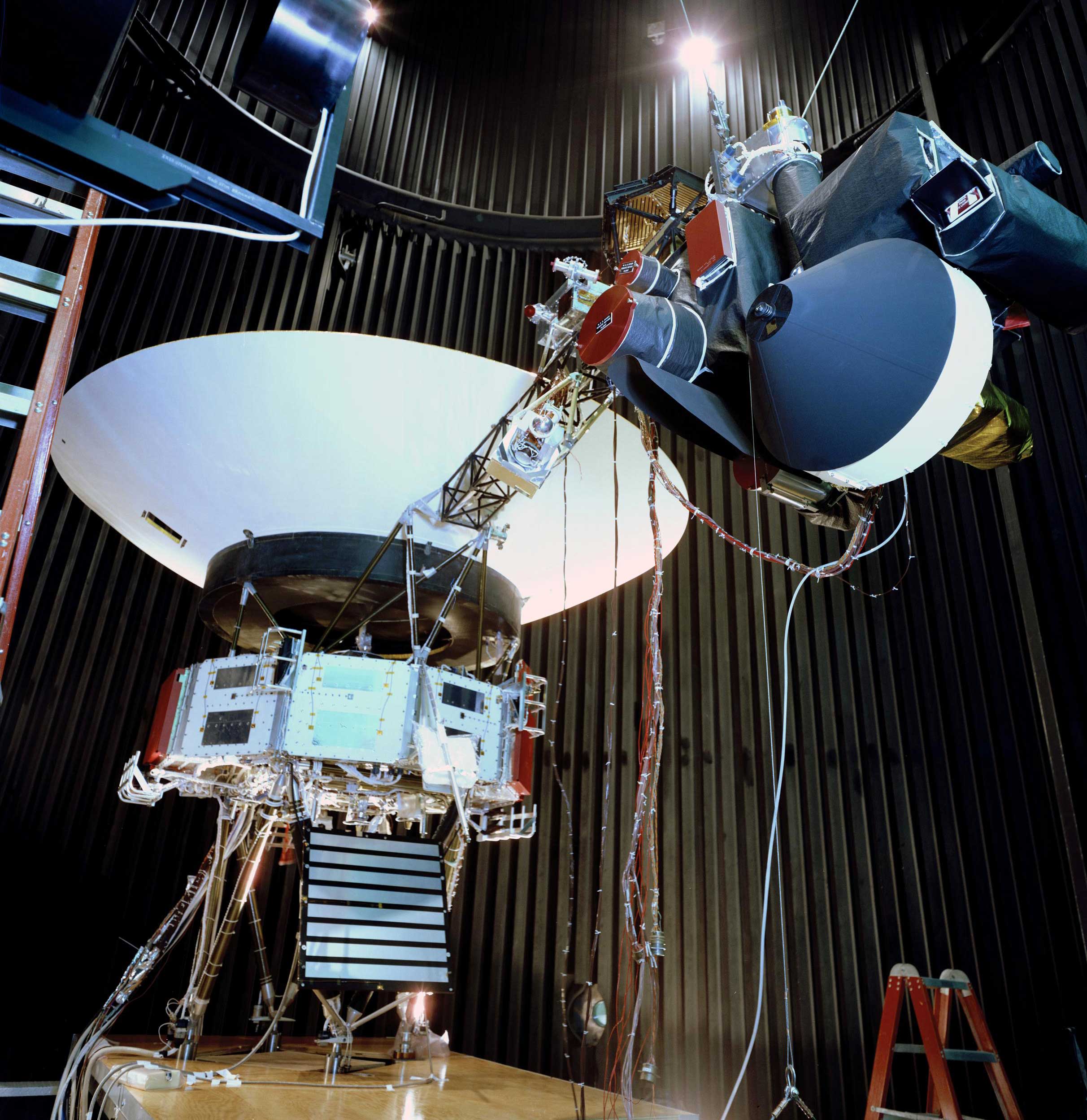
Editor's note: Language was added in the second paragraph on May 1 to underscore that the mission will continue even after a science instrument is retired.
The plan will keep Voyager 2's science instruments turned on a few years longer than previously anticipated, enabling yet more revelations from interstellar space.
Launched in 1977, the Voyager 2 spacecraft is more than 12 billion miles (20 billion kilometers) from Earth, using five science instruments to study interstellar space. To help keep those instruments operating despite a diminishing power supply, the aging spacecraft has begun using a small reservoir of backup power set aside as part of an onboard safety mechanism. The move will enable the mission to postpone shutting down a science instrument until 2026, rather than this year.
Switching off a science instrument will not end the mission. After shutting off the one instrument in 2026, the probe will continue to operate four science instruments until the declining power supply requires another to be turned off. If Voyager 2 remains healthy, the engineering team anticipates the mission could potentially continue for years to come.
Voyager 2 and its twin Voyager 1 are the only spacecraft ever to operate outside the heliosphere, the protective bubble of particles and magnetic fields generated by the Sun. The probes are helping scientists answer questions about the shape of the heliosphere and its role in protecting Earth from the energetic particles and other radiation found in the interstellar environment.
“The science data that the Voyagers are returning gets more valuable the farther away from the Sun they go, so we are definitely interested in keeping as many science instruments operating as long as possible,” said Linda Spilker, Voyager's project scientist at NASA's Jet Propulsion Laboratory in Southern California, which manages the mission for NASA.
Power to the Probes
Both Voyager probes power themselves with radioisotope thermoelectric generators (RTGs), which convert heat from decaying plutonium into electricity. The continual decay process means the generator produces slightly less power each year. So far, the declining power supply hasn't impacted the mission's science output, but to compensate for the loss, engineers have turned off heaters and other systems that are not essential to keeping the spacecraft flying.
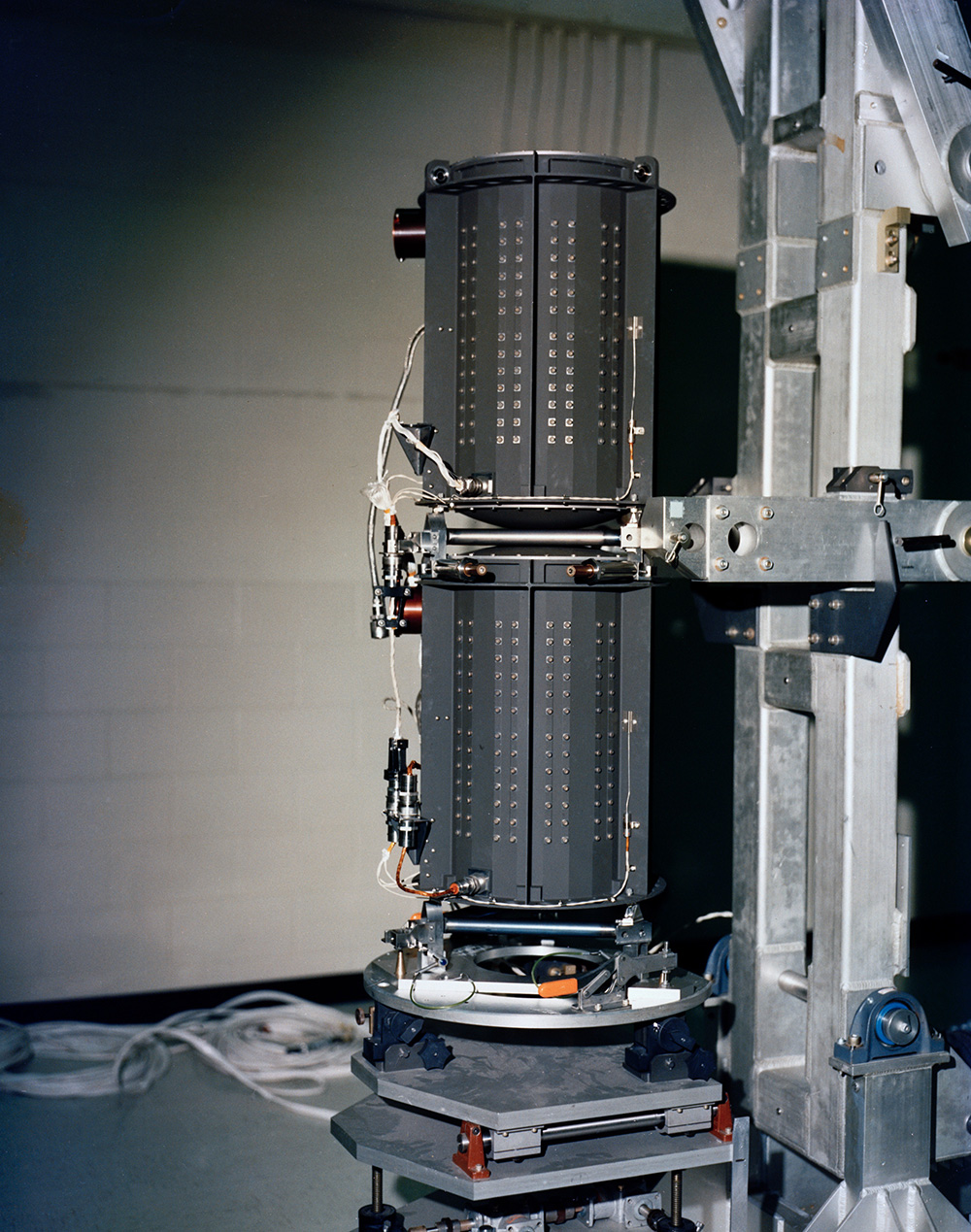
Each of NASA's Voyager probes are equipped with three radioisotope thermoelectric generators (RTGs), including the one shown here. The RTGs provide power for the spacecraft by converting the heat generated by the decay of plutonium-238 into electricity. Credit: NASA/JPL-Caltech
With those options now exhausted on Voyager 2, one of the spacecraft's five science instruments was next on their list. (Voyager 1 is operating one less science instrument than its twin because an instrument failed early in the mission. As a result, the decision about whether to turn off an instrument on Voyager 1 won't come until sometime next year.)
In search of a way to avoid shutting down a Voyager 2 science instrument, the team took a closer look at a safety mechanism designed to protect the instruments in case the spacecraft's voltage – the flow of electricity – changes significantly. Because a fluctuation in voltage could damage the instruments, Voyager is equipped with a voltage regulator that triggers a backup circuit in such an event. The circuit can access a small amount of power from the RTG that's set aside for this purpose. Instead of reserving that power, the mission will now be using it to keep the science instruments operating.
Although the spacecraft's voltage will not be tightly regulated as a result, even after more than 45 years in flight, the electrical systems on both probes remain relatively stable, minimizing the need for a safety net. The engineering team is also able to monitor the voltage and respond if it fluctuates too much. If the new approach works well for Voyager 2, the team may implement it on Voyager 1 as well.
“Variable voltages pose a risk to the instruments, but we've determined that it's a small risk, and the alternative offers a big reward of being able to keep the science instruments turned on longer,” said Suzanne Dodd, Voyager's project manager at JPL. “We've been monitoring the spacecraft for a few weeks, and it seems like this new approach is working.”
The Voyager mission was originally scheduled to last only four years, sending both probes past Saturn and Jupiter. NASA extended the mission so that Voyager 2 could visit Neptune and Uranus; it is still the only spacecraft ever to have encountered the ice giants. In 1990, NASA extended the mission again, this time with the goal of sending the probes outside the heliosphere. Voyager 1 reached the boundary in 2012, while Voyager 2 (traveling slower and in a different direction than its twin) reached it in 2018.
More About the Mission
A division of Caltech in Pasadena, JPL built and operates the Voyager spacecraft. The Voyager missions are a part of the NASA Heliophysics System Observatory, sponsored by the Heliophysics Division of the Science Mission Directorate in Washington.
For more information about the Voyager spacecraft, visit:
https://www.nasa.gov/voyager
News Media Contact
Calla Cofield Jet Propulsion Laboratory, Pasadena, Calif. 626-808-2469 [email protected] 2023-059

IMAGES
VIDEO
COMMENTS
Voyager 1 encountered Saturn in November 1980, with the closest approach on November 12, 1980, ... It was confirmed on December 13, 2010, that Voyager 1 had passed the reach of the radial outward flow of the solar wind, as measured by the Low Energy Charged Particle device. It is suspected that solar wind at this distance turns sideways because ...
At Saturn, Voyager 1 found five new moons and a new ring called the G-ring. ... Perhaps the most interesting target was Titan, which Voyager 1 passed at 05:41 UT on Nov. 12 at a range of 2,500 miles (4,000 kilometers). Images showed a thick atmosphere that completely hid the surface. The spacecraft found that the moon's atmosphere was ...
Today, Voyager 1 is the most distant spacecraft from Earth, more than 14 billion miles away and continuing on its journey out of our solar system. Forty years ago, it made its closest approach to Saturn. Although it was not the first to explore the giant ringed planet, as the Pioneer 11 spacecraft completed the first flyby in 1979, Voyager ...
The Voyager 1 and 2 Saturn encounters occurred nine months apart, in November 1980 and August 1981. Voyager 1 is leaving the solar system. Voyager 2 completed its encounter with Uranus in January 1986 and with Neptune in August 1989, and is now also en route out of the solar system. The two Saturn encounters increased our knowledge and altered ...
Voyager 1 began its long-range observations of Saturn on Aug. 22, 1980, passed within 114,500 miles of the planet's center on Nov. 12, and concluded its studies on Dec. 14. Because of its interest to scientists, mission planners chose the spacecraft's trajectory to make a close flyby of Saturn's largest moon Titan - the only planetary ...
The Voyager 1 and 2 Saturn encounters occurred nine months apart, in November 1980 and August 1981. Voyager 1 is leaving the solar system. ... Voyager 2 passed about 40,000 kilometers (25,000 miles) from Neptune's largest moon, Triton, the last solid body the spacecraft will have an opportunity to study. Solar System Portrait
Voyager 1 flew within 64,200 kilometers (40,000 miles) of the cloud tops, while Voyager 2 came within 41,000 kilometers (26,000 miles). Saturn is the second largest planet in the solar system. It takes 29.5 Earth years to complete one orbit of the Sun, and its day was clocked at 10 hours, 39 minutes.
Voyager 1 passed Jupiter on March 5, 1979, and Saturn on November 12, 1980. It's current velocity is about 38,000 miles per hour. On its flyby of Saturn, Voyager 1 found an abundance of new data regarding the planet and its moons. Specifically, it found three new moons, Prometheus, Pandora, and Atlas. Prometheus and Pandora are shepherding ...
Voyager 1's departure shot of Saturn Saturn was Voyager 1's last planetary encounter. It captured this iconic image of the ringed giant as it left the Saturn system at 21:15 UTC on December 15, 1980. ... Unlike its twin Voyager 2's departing view, Voyager 1 looked down onto the lit side of the rings; but since Saturn had just passed through its ...
Voyager 1 looked back at Saturn on Nov. 16, 1980, four days after the spacecraft flew past the planet, to observe the appearance of Saturn and its rings from this unique perspective. A few of the spokelike ring features discovered by Voyager appear in the rings as bright patches in this image, taken at a distance of 5.3 million kilometers (3.3 ...
Nov 11, 2010. Article. Ed Stone, project scientist for NASA's Voyager mission, remembers the first time he saw the kinks in one of Saturn's narrowest rings. It was the day the Voyager 1 spacecraft made its closest approach to the giant ringed planet, 30 years ago. Scientists were gathering in front of television monitors and in one another's ...
Voyager 1 visits Saturn and its moons. Scientists only had to wait about a year, until 1980, to get close-up pictures of Saturn. Like Jupiter, the ringed planet turned out to be full of surprises.
This visualization tracks the trajectory of the Voyager 1 spacecraft through the solar system. Launched on September 5, 1977, it was one of two spacecraft sent to visit the giant planets of the outer solar system. Voyager 1 flew by Jupiter and Saturn before being directed out of the solar system.To fit the 40 year history of the mission into a short visualization, the pacing of time ...
Voyager 2 made its closest approach to Saturn 35 years ago -- on Aug. 25, 1981. What the Voyagers revealed at the planet was so phenomenal that, just one year later, a joint American and European working group began discussing a mission that would carry on Voyager's legacy at Saturn. That mission -- named Cassini -- has been studying the Saturn ...
Voyager 2 made its closest approach to Saturn 40 years ago - on Aug. 25, 1981. What the Voyagers revealed at the planet was so phenomenal that, just one year later, a joint American and European working group began discussing a mission that would carry on the legacy of the Voyagers at Saturn. That mission - Cassini - studied the Saturn ...
The probe and its twin, Voyager 2, are the only spacecraft to ever fly in interstellar space (the space between stars). Voyager 1 stopped sending readable science and engineering data back to Earth on Nov. 14, 2023, even though mission controllers could tell the spacecraft was still receiving their commands and otherwise operating normally.
Both spacecraft visited Jupiter and Saturn, then the twins parted ways: Voyager 1 studied Saturn's moon Titan while Voyager 2 swung past Uranus and Neptune. ... Voyager 1 passed through the ...
The Voyager 1 and 2 Saturn encounters occurred nine months apart, in November 1980 and August 1981. Voyager 1 is leaving the solar system. Voyager 2 completed its encounter with Uranus in January 1986 and with Neptune in August 1989, and is now also en route out of the solar system. For a summary of scientific findings by the two Voyagers at ...
Four robotic spacecraft have visited Saturn, including Pioneer 11, Cassini, and Voyager 1 and 2. What does Saturn look like? The Cassini spacecraft took this picture of Saturn's rings. You can see the grey and tan colors. This is a picture of Saturn and its moons Tethys and Dione. Voyager 1 took this picture as it passed by.
The History of the Voyagers. Voyagers 1 and 2 were initially on a four-year mission to study Jupiter, Saturn and the larger moons of the two planets over a period of five years.
In the early days of the mission, Voyager 1 flew by Jupiter, Saturn, and important moons of each. To accurately fly by and point the spacecraft's instruments at a smorgasbord of targets, engineers used "trajectory correction maneuver," or TCM, thrusters that are identical in size and functionality to the attitude control thrusters, and are located on the back side of the spacecraft.
It was the ultimate remote IT service, spanning 24 billion kilometers of space to fix an antiquated, hobbled computer built in the 1970s. Voyager 1, one of the celebrated twin spacecraft that was the first to reach interstellar space, has finally resumed beaming science data back to Earth after a 6-month communications blackout, NASA announced this week.
The Voyager spacecraft are the third and fourth human spacecraft to fly beyond all the planets in our solar system. Pioneers 10 and 11 preceded Voyager in outstripping the gravitational attraction of the Sun but on February 17, 1998, Voyager 1 passed Pioneer 10 to become the most distant human-made object in space.
Things to Do in Elektrostal. 1. Electrostal History and Art Museum. 2. Statue of Lenin. 3. Park of Culture and Leisure. 4. Museum and Exhibition Center.
Elektrostal Geography. Geographic Information regarding City of Elektrostal. Elektrostal Geographical coordinates. Latitude: 55.8, Longitude: 38.45. 55° 48′ 0″ North, 38° 27′ 0″ East. Elektrostal Area. 4,951 hectares. 49.51 km² (19.12 sq mi) Elektrostal Altitude.
Sept. 1, 1979: Pioneer 11 is the first spacecraft to reach Saturn. Among Pioneer 11's many discoveries are Saturn's F ring and a new moon. 1980 and 1981: In its 1980 flyby of Saturn, Voyager 1 reveals the intricate structure of the ring system, consisting of thousands of ringlets. Flying even closer to Saturn in 1981, Voyager 2 provides more ...
Law #130/2004-OZ of October 25, 2004 On the Status and the Border of Elektrostal Urban Okrug, as amended by the Law #82/2010-OZ of July 1, 2010 On Amending the Law of Moscow Oblast "On the Status and the Border of Elektrostal Urban Okrug" and the Law of Moscow Oblast "On the Status and Borders of Noginsky Municipal District and the Newly ...
Geographic coordinates of Elektrostal, Moscow Oblast, Russia in WGS 84 coordinate system which is a standard in cartography, geodesy, and navigation, including Global Positioning System (GPS). Latitude of Elektrostal, longitude of Elektrostal, elevation above sea level of Elektrostal.
Editor's note: Language was added in the second paragraph on May 1 to underscore that the mission will continue even after a science instrument is retired. The plan will keep Voyager 2's science instruments turned on a few years longer than previously anticipated, enabling yet more revelations from interstellar space.